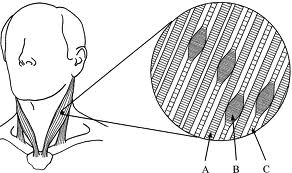You hear us therapist talk about trigger points and you know they are painful but what are they really? Is it just a figure of speech, or are they an actual cause of pain?
Well they are actually a specific type of muscular “knot” and cause of pain that have a few defining features.Back in 1940’s Dr Janet Travell pioneered the diagnosis and treatment of trigger points and it was this amazing work that lead her to become John F Kennedy’s personal physician and the first female physician to the White House. Kennedy suffered from terrible pain resulting from invasive back surgeries related to injuries sustained during World War II and Dr Travell alleviated this through her trigger point work.
Today, trigger point therapy is a very popular and successful treatment with massage therapists, acupuncturists (& dry needling), physios, chiropractors and some doctors.
So you’ve got an ache in your shoulder and sometimes it’s a searing sharp pain and it’s just not getting any better. Let’s look very closely at what is going on in the muscle.
Within a muscle fibre at a microscopic level is a unit called a sarcomere. There are millions of sarcomeres in your muscles and they come together and interlock like tiny fingers and this is what causes a muscle contraction. A trigger point is when the over stimulated sarcomeres are chemically prevented from relaxing and thus a knot is formed in
 the muscle tissue.
the muscle tissue.As you can see from the diagram, taut fibrous bands of muscle coupled with shortened bulbous areas where the sarcomeres are unable to let go.
A. Is a normal resting length muscle fibre
B. Contracted area of muscle fibre (over stimulated sarcomeres), this the trigger point
C. Is a taut band caused by the contraction in B.
Reference: Clair Davies http://www.triggerpointbook.com/travell.htm
So I hope this helps with you visualising what is going on in your own muscles!
Another thing which adds to the pain you feel is that the sarcomeres act as tiny pumps, pumping blood, oxygen and nutrients around the muscles and so when it is contracted into a trigger point it gets starved of oxygen and the bathed in other metabolic waste which is irritating to the surrounding tissues and so the area sends out pain signals.
A defining symptom of a trigger point as opposed to a tender point is referred pain. It often feels like a deep ache and sometimes sharp pain on movement.
Research on pain referral is difficult because the mechanisms of the human nervous system are so unimaginably small. The tiny electrochemical impulses in the nerves can be detected and measured to some extent, but not with accuracy or great discrimination (Clair Davies)
Trigger points can be found in all muscles and there is some indication that they can be in fascia or connective tissue as well...this is why they can cause headaches, shoulder pain, back pain, tennis & golfers elbow, hip pain even stitch.
Massage can eliminate trigger points by releasing the taut band and contracted muscle fibres with finger point compression and really getting the blood flow into the muscle and the metabolic waste out of the muscle.
Of course looking at why the muscle was in a compromised state needs to be determined to stop the trigger points reoccurring. Looking at posture patterns, biomechanics, gait and habits can all have an effect.
So just remember what Dr Janet Travell said...”look after your muscles and they will look after you”
So book in for a massage today and let us look after your muscles!









